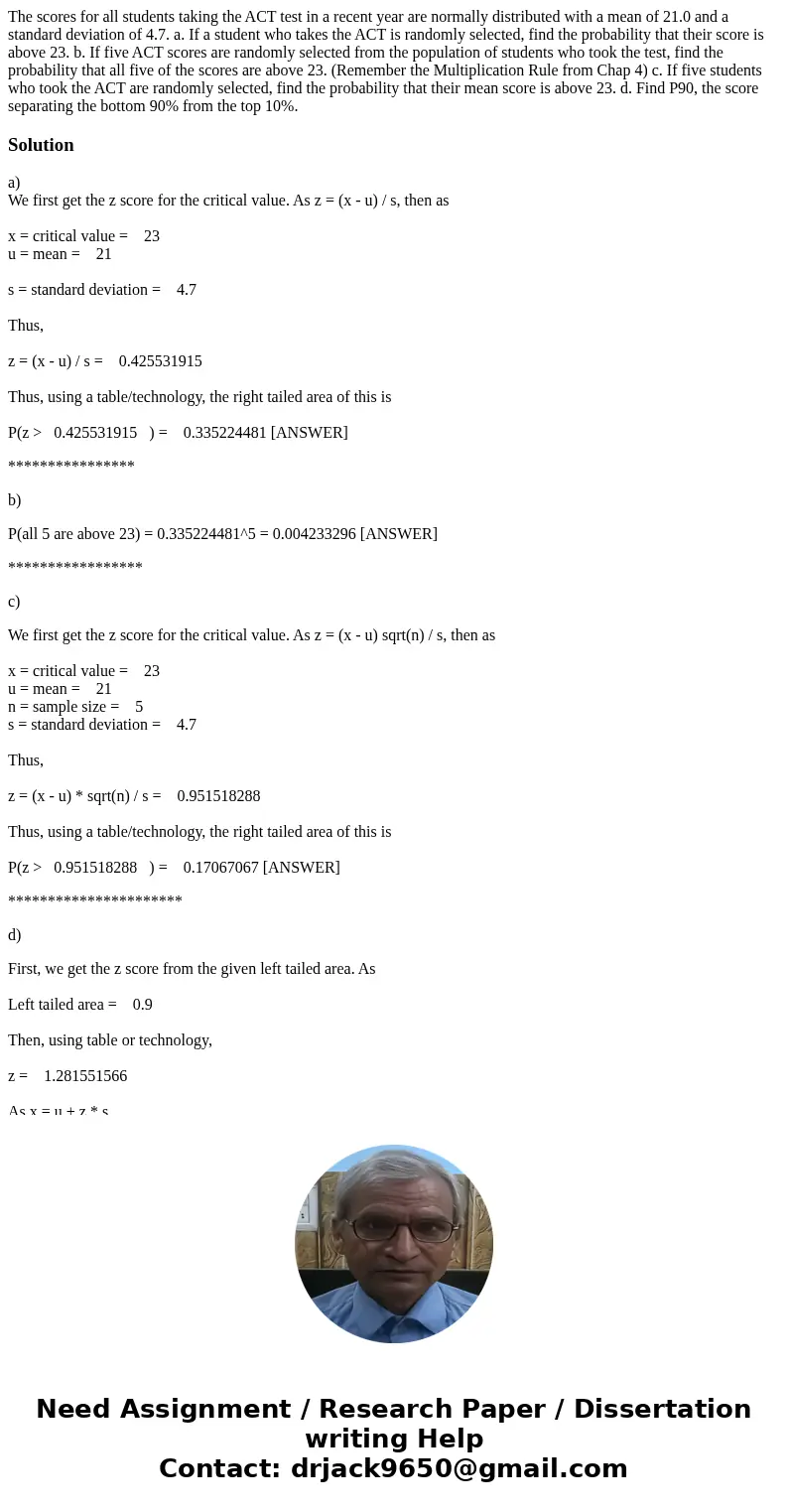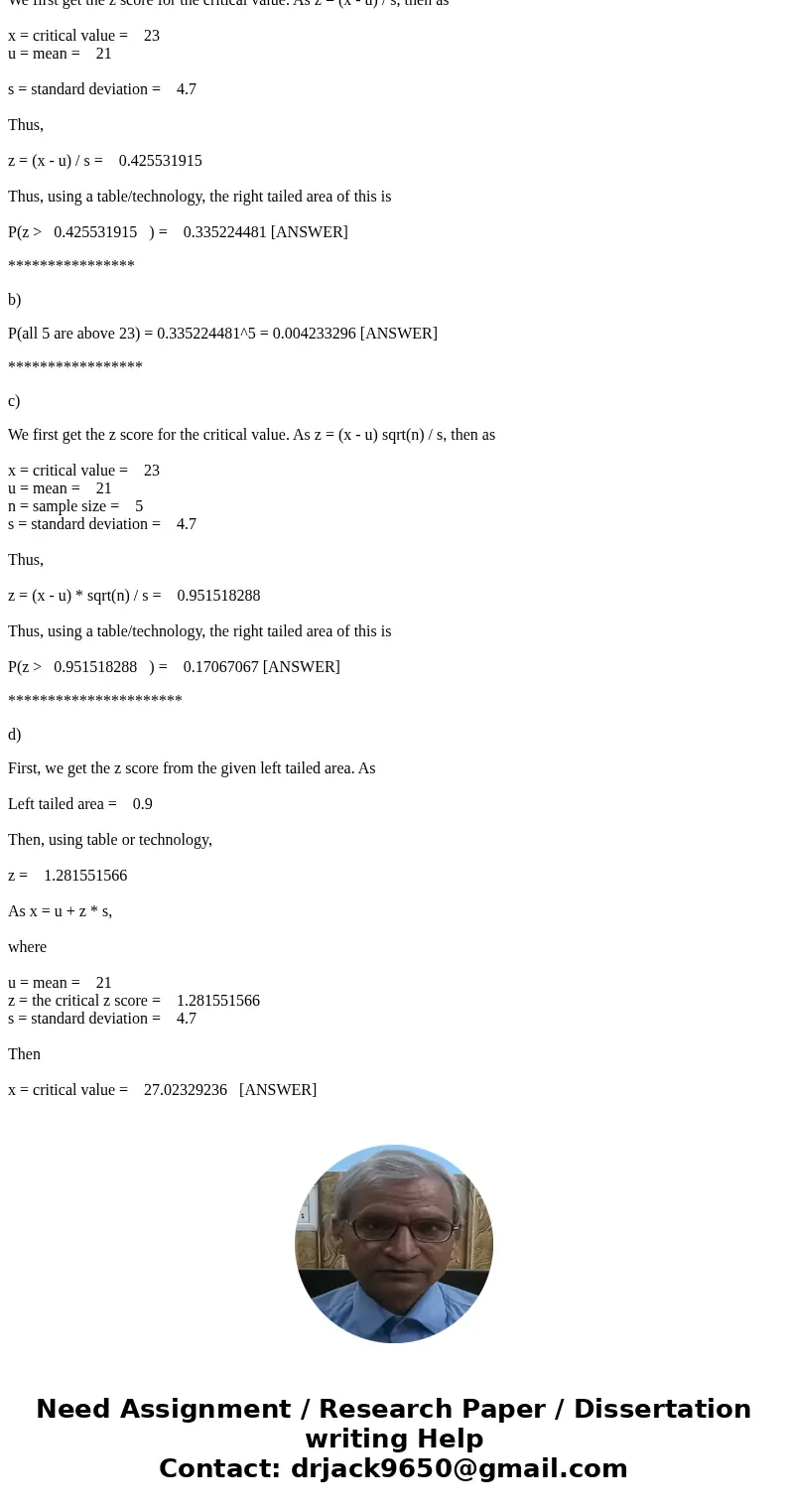The scores for all students taking the ACT test in a recent
The scores for all students taking the ACT test in a recent year are normally distributed with a mean of 21.0 and a standard deviation of 4.7. a. If a student who takes the ACT is randomly selected, find the probability that their score is above 23. b. If five ACT scores are randomly selected from the population of students who took the test, find the probability that all five of the scores are above 23. (Remember the Multiplication Rule from Chap 4) c. If five students who took the ACT are randomly selected, find the probability that their mean score is above 23. d. Find P90, the score separating the bottom 90% from the top 10%.
Solution
a)
We first get the z score for the critical value. As z = (x - u) / s, then as
x = critical value = 23
u = mean = 21
s = standard deviation = 4.7
Thus,
z = (x - u) / s = 0.425531915
Thus, using a table/technology, the right tailed area of this is
P(z > 0.425531915 ) = 0.335224481 [ANSWER]
****************
b)
P(all 5 are above 23) = 0.335224481^5 = 0.004233296 [ANSWER]
*****************
c)
We first get the z score for the critical value. As z = (x - u) sqrt(n) / s, then as
x = critical value = 23
u = mean = 21
n = sample size = 5
s = standard deviation = 4.7
Thus,
z = (x - u) * sqrt(n) / s = 0.951518288
Thus, using a table/technology, the right tailed area of this is
P(z > 0.951518288 ) = 0.17067067 [ANSWER]
**********************
d)
First, we get the z score from the given left tailed area. As
Left tailed area = 0.9
Then, using table or technology,
z = 1.281551566
As x = u + z * s,
where
u = mean = 21
z = the critical z score = 1.281551566
s = standard deviation = 4.7
Then
x = critical value = 27.02329236 [ANSWER]


 Homework Sourse
Homework Sourse